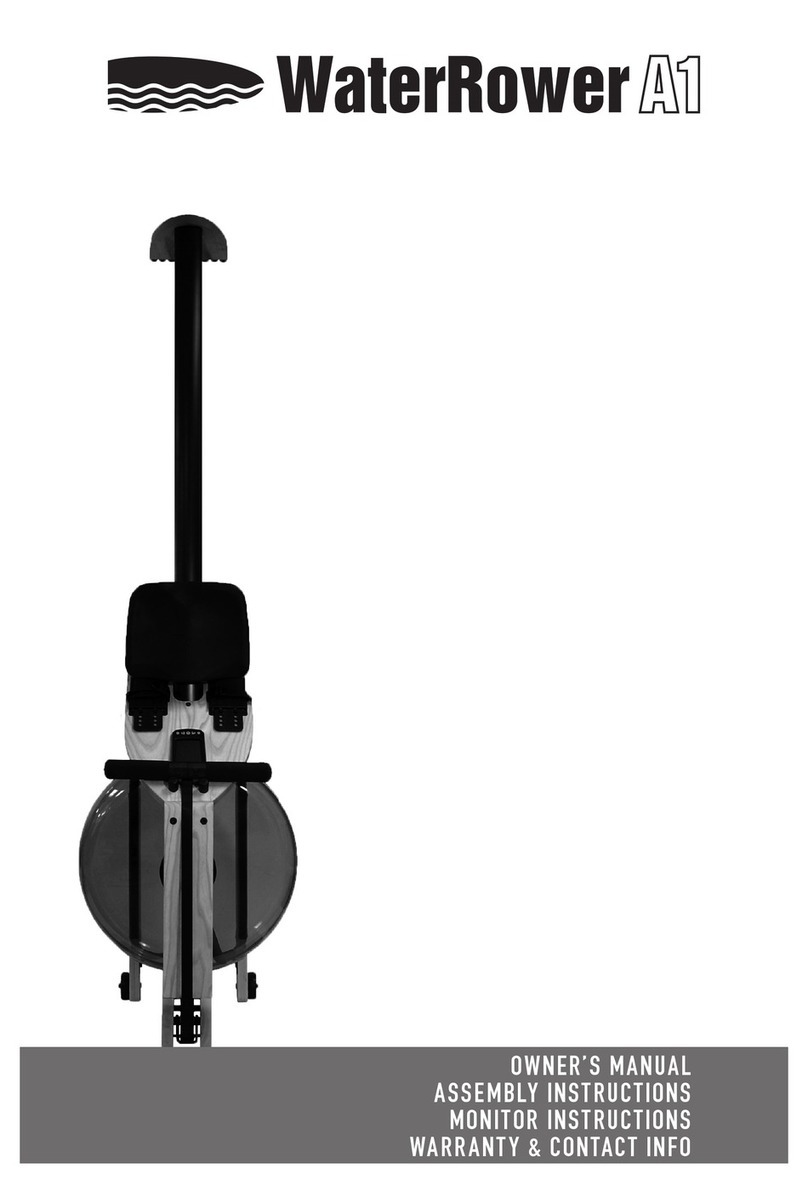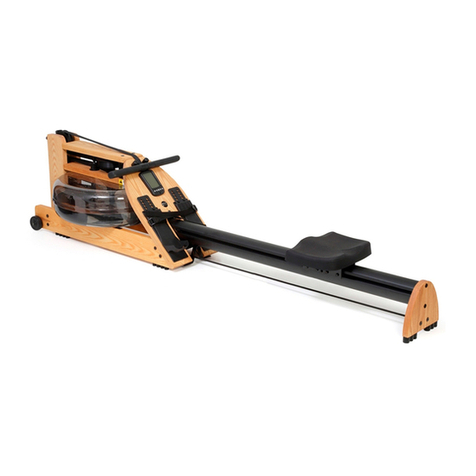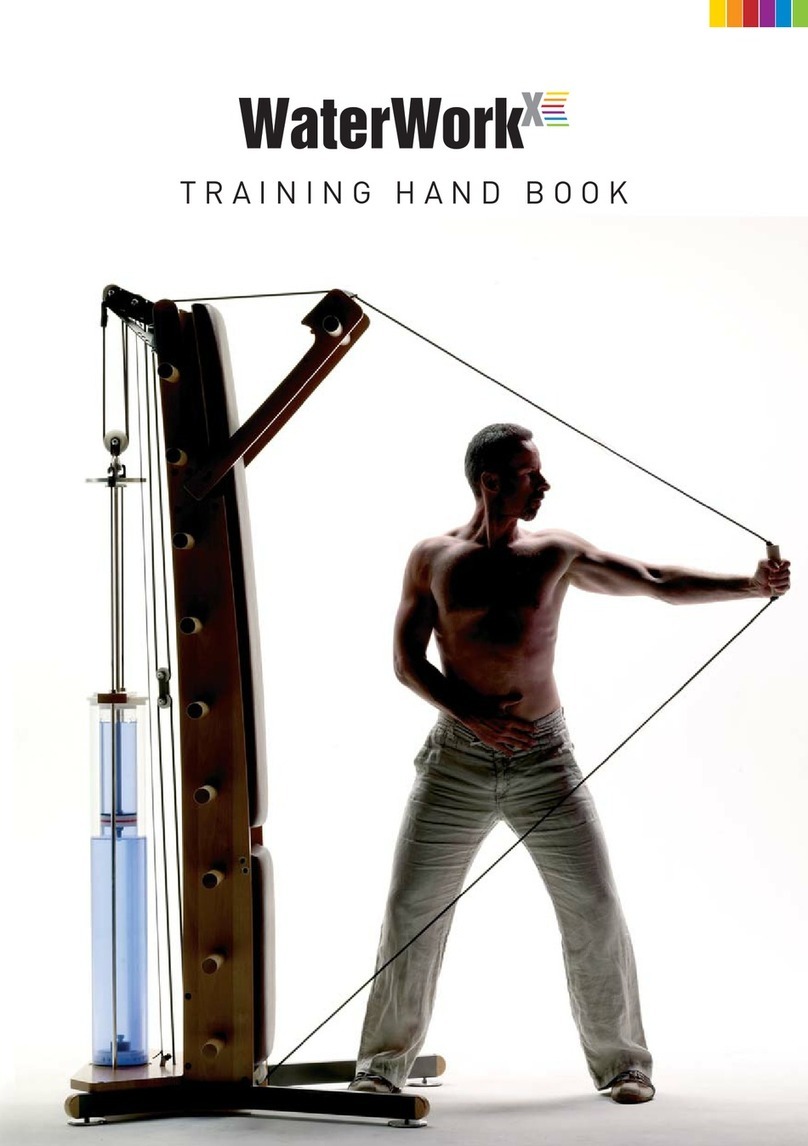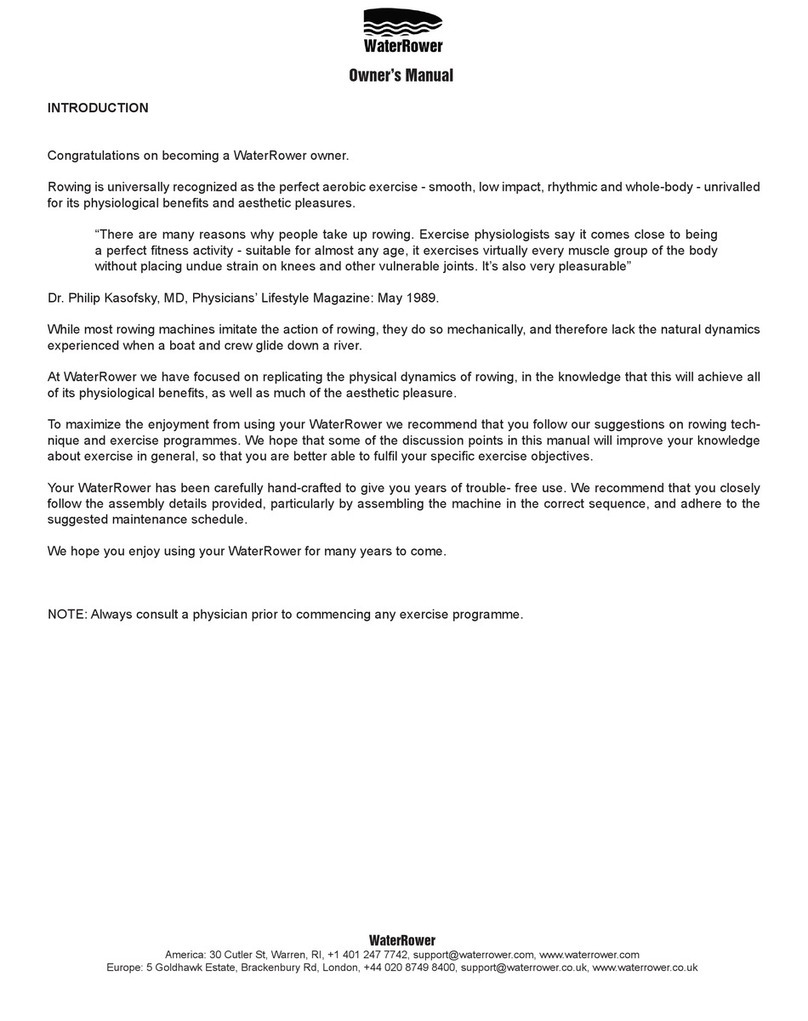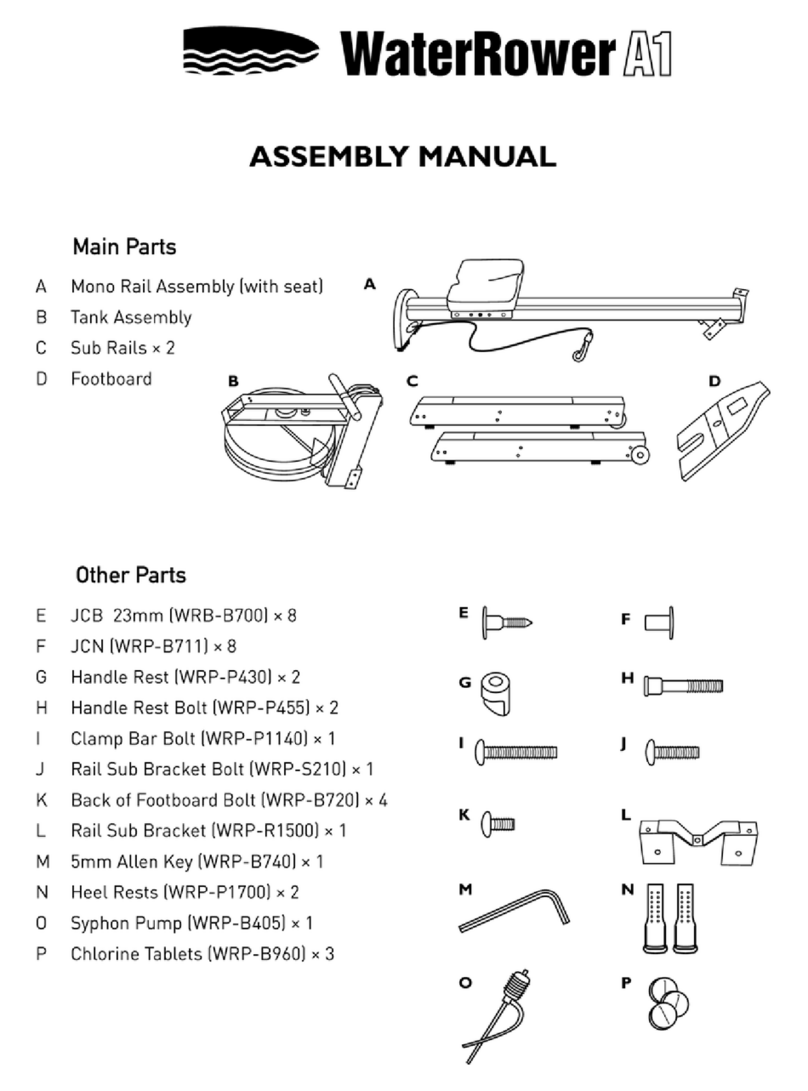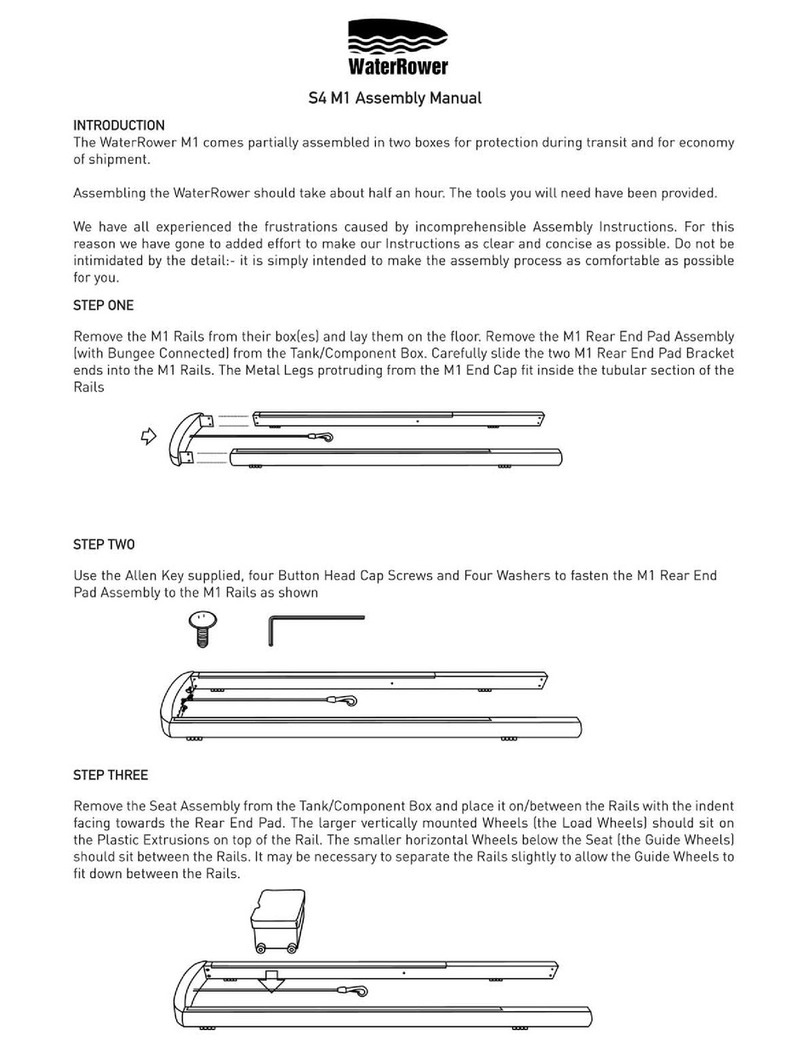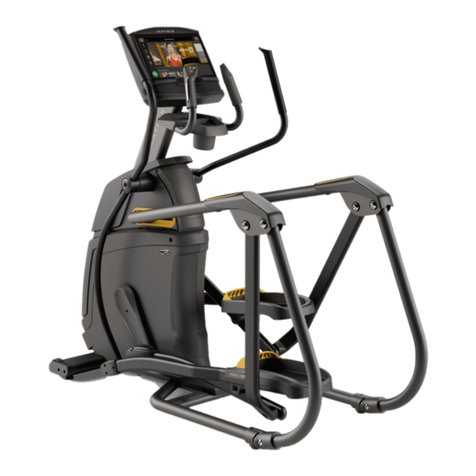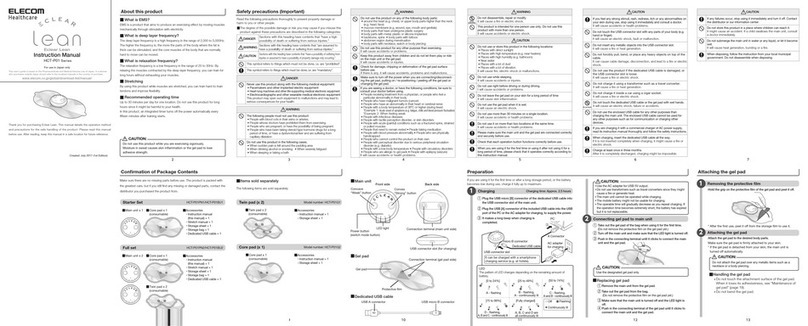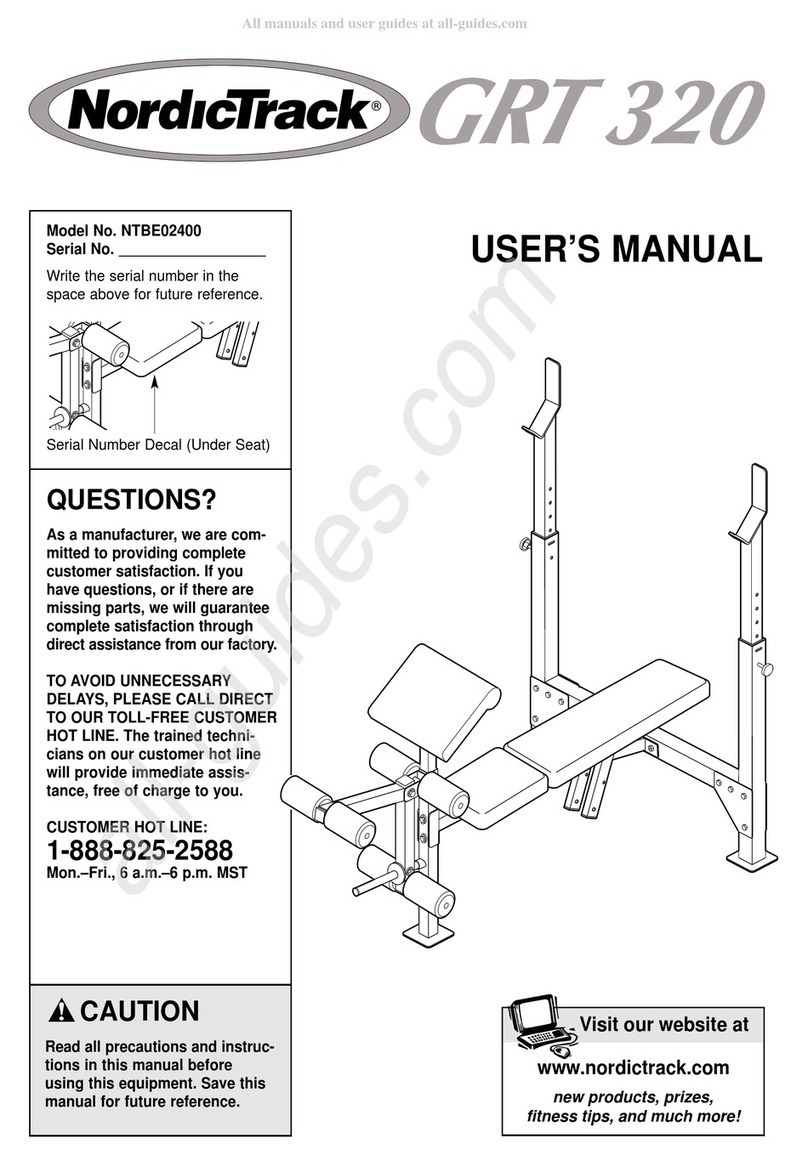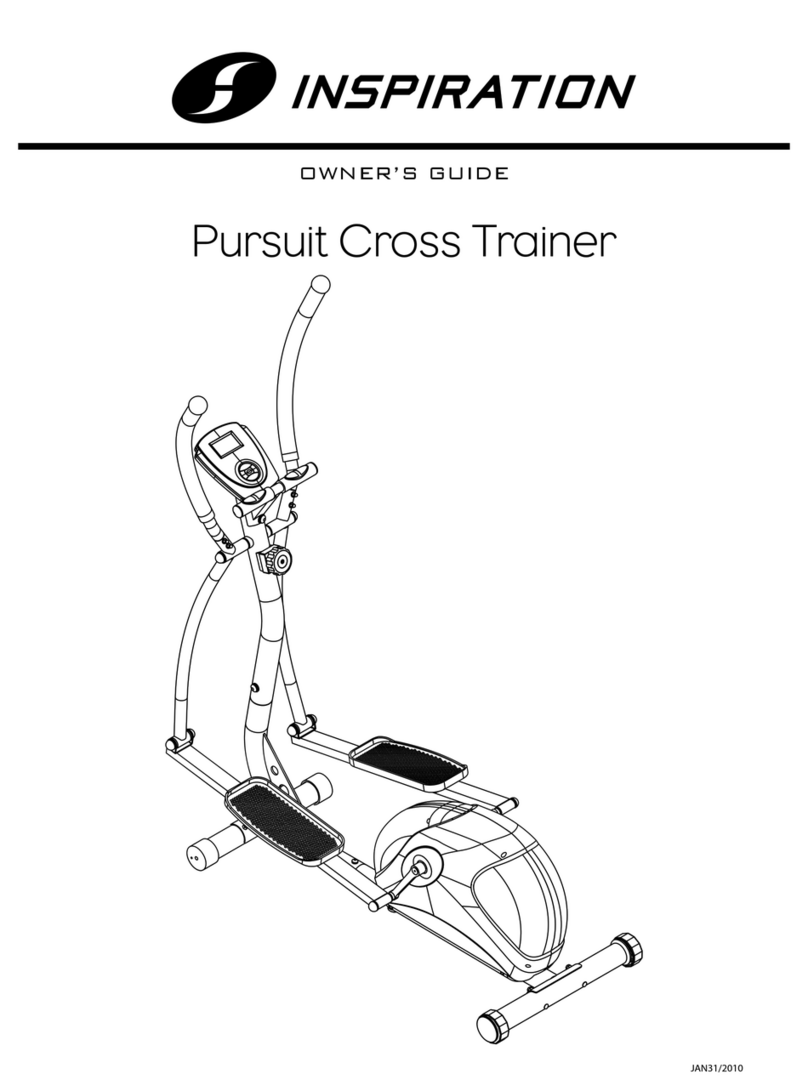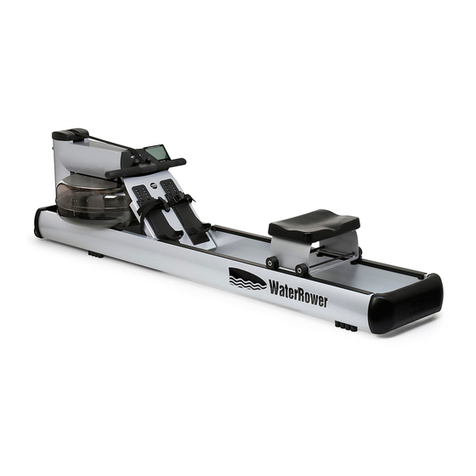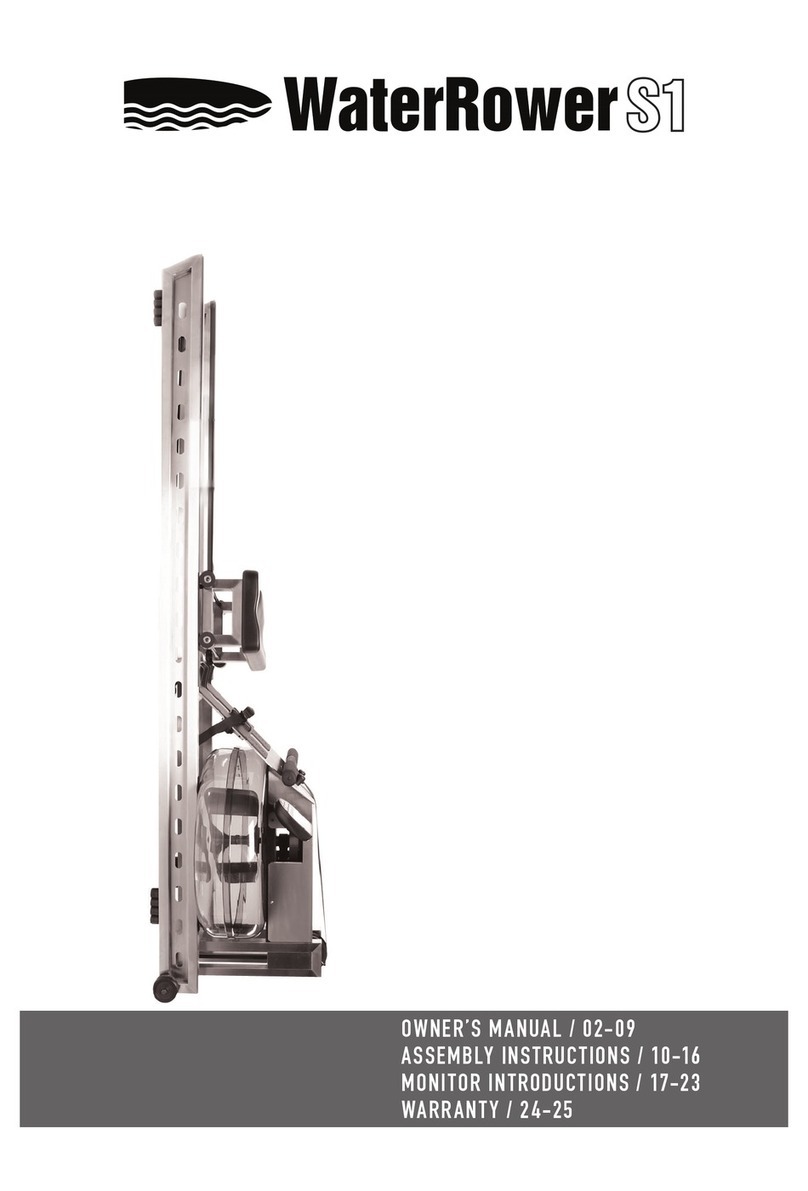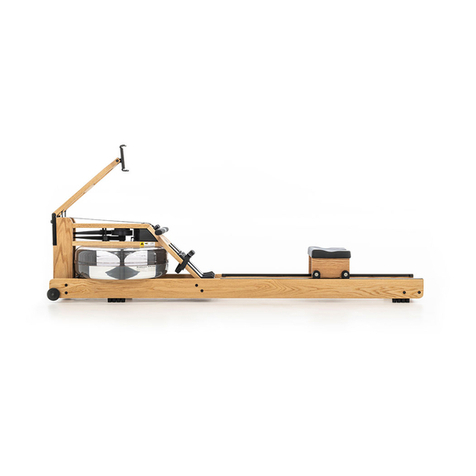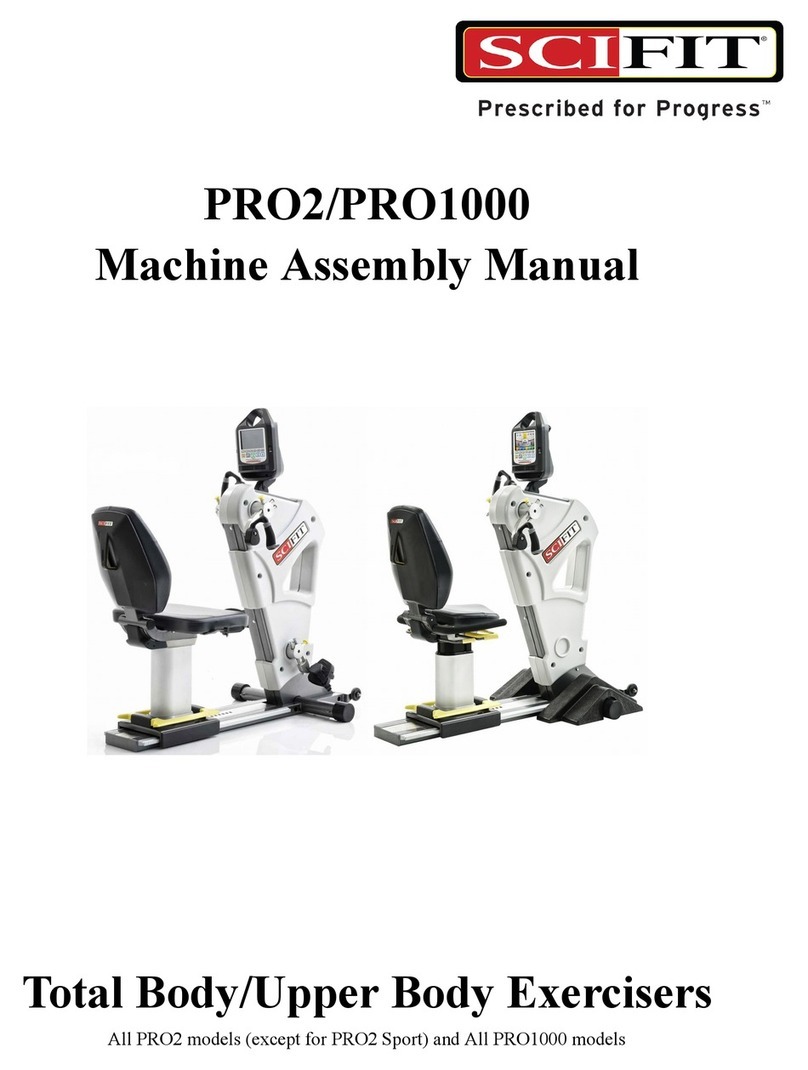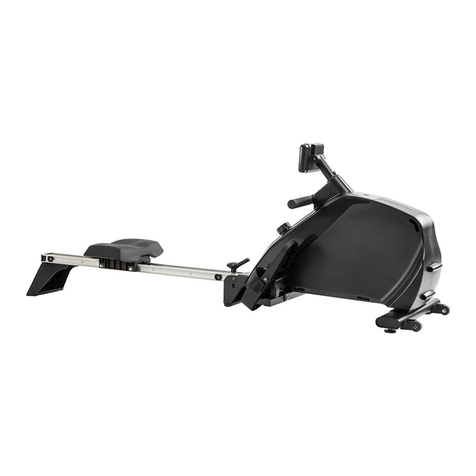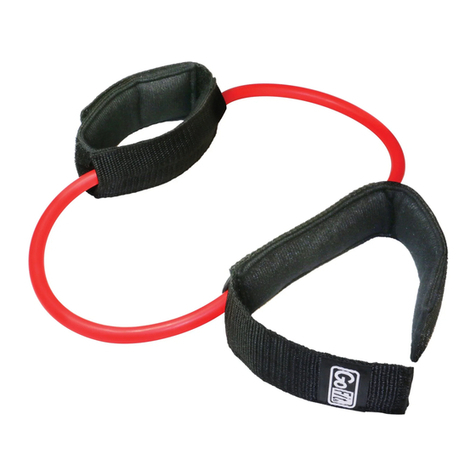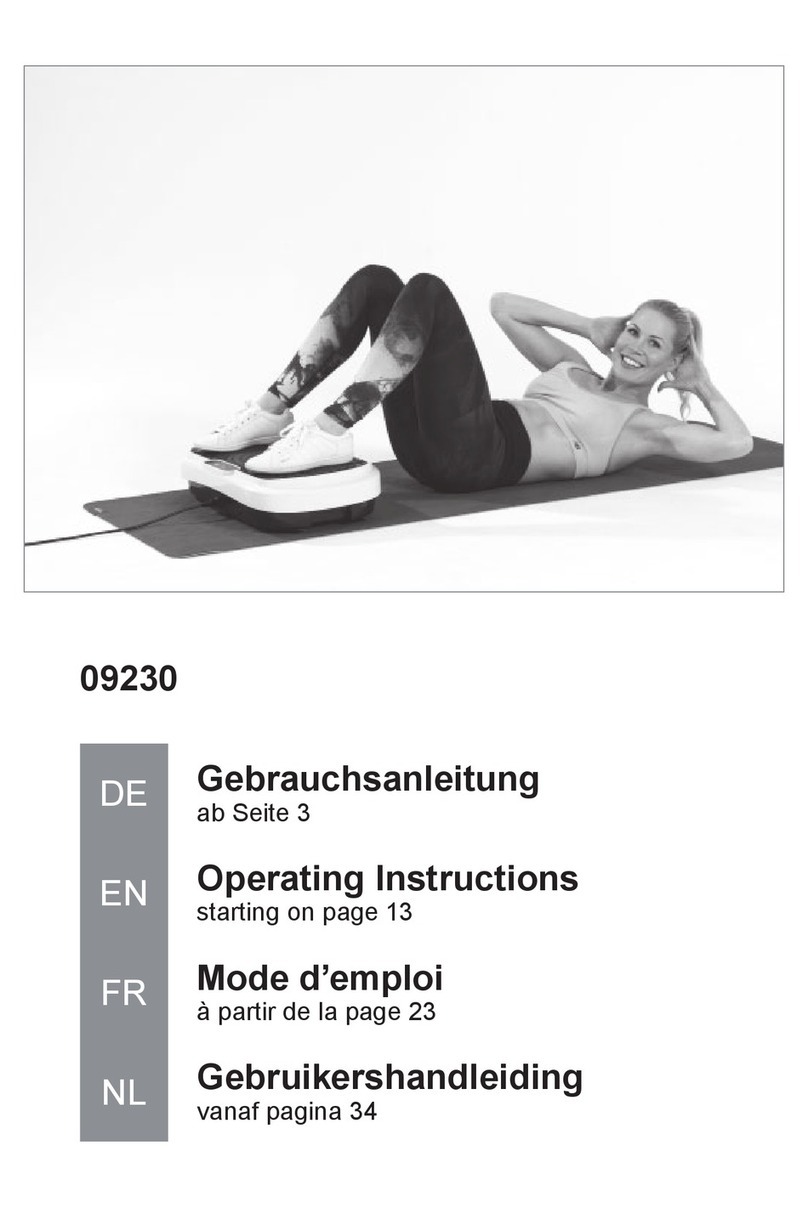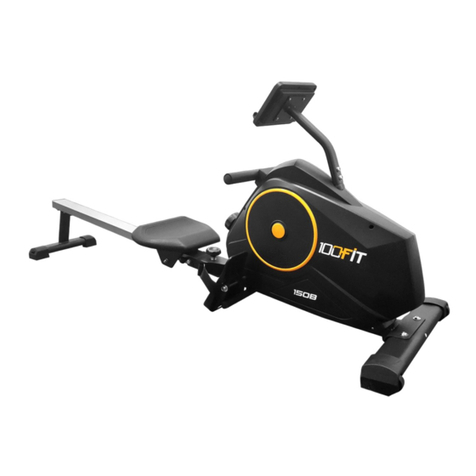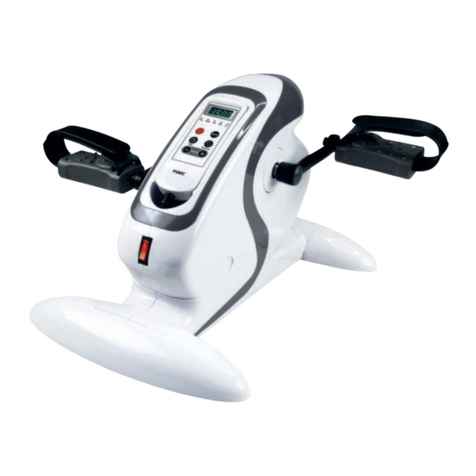3
Footpad Position
The Footpad has been designed to be adjusted for
maximum comfort. The Footstrap is designed to cross the
foot at the pivot point of the toes (the ball of the foot). This
should enable the heel to be raised off the Footboard as
the user comes forward with each stroke. The Footpad can
be easily adjusted to accommodate different users, simply
lift the top lip of the Footpad to unhook and slide up or
down to reposition on another hole.
Start Up Maintenance
During the rst weeks of use, the wood in your WaterRower will adjust to the
temperature and humidity of the environment. During this period it is strongly
advised that you GENTLY tighten all the Connecting Bolts with the Allen Key
stored under the Rear Spacer. PLEASE BE CAREFUL NOT TO OVER TIGHTEN
ANY OF THESE BOLTS. DO NOT TIGHTEN THE FOOTBOARD BOLTS.
Additionally, as the Drive and Recoil Belts loosen up with use, it may be
necessary to tighten the Bungee Cord. To do this, leave the Handle in the full
forward position and adjust the Bungee/Recoil Belt Buckle to provide a little more
tension. It will only be necessary to perform these two simple start up procedures
once or twice over the rst month of use.
Preventative Maintenance
Periodic maintenance is required to maintain the condition of the water in the
tank. We strongly ADVISE USING MUNICIPAL TAP WATER which contains
Chlorine and other Chemicals to keep it free from Bacteria and Algae, etc. The
Chlorine must be refreshed periodically by adding a Water Purication Tablet
provided in the back of the Owner’s Manual. Chlorine degrades by exposure to
light: this may vary from 6 months in direct sunlight to 2 years in an articially lit
environment. On average, add one purication tablet every six months.
If water discoloration occurs add a Purication Tablet immediately. If the water
does not clear, we recommend emptying the Tank, ushing it out with Clean
Water, relling, and adding a Purication Tablet. Never use Chlorine Bleach in
the Tank as this will irreparably damage the Polycarbonate Tank..
Maintaining and Cleaning
To maintain the appearance and integrity of your WaterRower it is necessary to
keep the machine clean. It is particularly important to ensure that there is no dust
build up in the Clutch and Belt Mechanism between the Top and Bottom Decks.
Dust can be removed by using a vacuum cleaner.
The surface of the Rails must be kept clean to prevent dust fouling the Seat
Wheels, and can be cleaned by wiping with a damp cloth.
The surface of the Tank can be cleaned, however, please ensure you read the
Instructions for any Cleaning Fluids prior to use: do not use Methylated Chlorates








